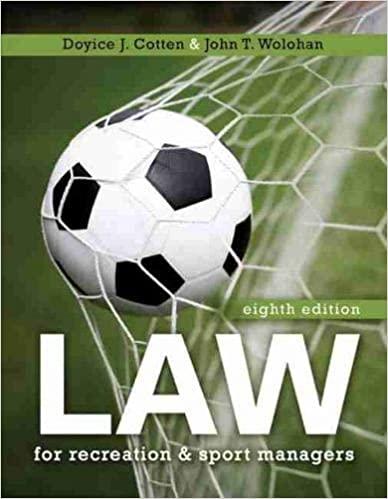Answered step by step
Verified Expert Solution
Question
1 Approved Answer
Section 1 When conducting, it's always good to start with the client's background information. For example , if the client is asking to be represented
 Section 1 When conducting, it's always good to start with the client's background information. For example , if the client is asking to be represented in a paternity case , you would need to know if the client was married to the plaintiff when the child was born . If the client is considered the putative father or the legal father . Does the client have other children with the plaintiff or other women , etc . After learning the client's background , you would then need to find out what took place leading up to the incident . You will need to know all the events and circumstances that took place , so the client will need to be very thorough with their answers . You need this information to help you decide the best course of action when proceeding with the case and what additional research will need to be done in order to best represent your client . Next , you will need the client to explain what happened during the actual incident . This is the most crucial part of the interview . Any detail the client provides will need to be noted , because it may be a vital piece of information for the case . Since the information in this part of the interview is what the case pertains to, the notes taken need to have the most detail . The information gathered will play a big part in the complaints , orders , and petitions submitted to the court Finally , you will have the client explain what happened after the event occurred . The client will need to provide what have immediately after and any other pertinent information that has occurred since . This information will help determine any loses , damages , or suffering the client have endured since the incident happened Section 2 1. Jim was not drinking the night of the party. 2. Jim allowed his friend to borrow his keys 3. Jim left the party after midnight 4. It is not known how long the friend had Jim's keys 5. Jim was at the party at the time of the robbery 2. Jim allowed his friend to borrow his keys Since Jim was not drinking , why did he not move his car on his own ? Why did Jim trust his friend with his car
Section 1 When conducting, it's always good to start with the client's background information. For example , if the client is asking to be represented in a paternity case , you would need to know if the client was married to the plaintiff when the child was born . If the client is considered the putative father or the legal father . Does the client have other children with the plaintiff or other women , etc . After learning the client's background , you would then need to find out what took place leading up to the incident . You will need to know all the events and circumstances that took place , so the client will need to be very thorough with their answers . You need this information to help you decide the best course of action when proceeding with the case and what additional research will need to be done in order to best represent your client . Next , you will need the client to explain what happened during the actual incident . This is the most crucial part of the interview . Any detail the client provides will need to be noted , because it may be a vital piece of information for the case . Since the information in this part of the interview is what the case pertains to, the notes taken need to have the most detail . The information gathered will play a big part in the complaints , orders , and petitions submitted to the court Finally , you will have the client explain what happened after the event occurred . The client will need to provide what have immediately after and any other pertinent information that has occurred since . This information will help determine any loses , damages , or suffering the client have endured since the incident happened Section 2 1. Jim was not drinking the night of the party. 2. Jim allowed his friend to borrow his keys 3. Jim left the party after midnight 4. It is not known how long the friend had Jim's keys 5. Jim was at the party at the time of the robbery 2. Jim allowed his friend to borrow his keys Since Jim was not drinking , why did he not move his car on his own ? Why did Jim trust his friend with his car

Step by Step Solution
There are 3 Steps involved in it
Step: 1

Get Instant Access to Expert-Tailored Solutions
See step-by-step solutions with expert insights and AI powered tools for academic success
Step: 2

Step: 3

Ace Your Homework with AI
Get the answers you need in no time with our AI-driven, step-by-step assistance
Get Started


